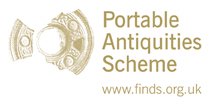Server check!
You are on the training database
Chapes
Bronze Chapes were placed at the end of a sword or dagger scabbard to prevent the sword from becoming damaged or creating damage. Occasionally they are found with the sword still inside them.
Tongue shaped
There are two types of Tongue shaped chapes the long and the short variety.
Dating and distribution
Date = 1100-800 BC
Distribution = Britain
Examples
SWYOR-4A2F62
1998,0901.152 http://www.britishmuseum.org/research/search_the_collection_database/search_object_details.aspx?objectid=1343335&partid=1
Bag-shaped
It is possible that these 'bag-shaped' chapes developed from short-tongue chapes. These small chapes have a convex base, defined by a bead and a concave mouth, defined by a rib.
Dating and distribution
Date: 900-800 BC
Distribution: mainly in South eastern England and a few from Ireland
Example
 PAS record number: HAMP-095061
PAS record number: HAMP-095061
Object type: Scabbard
Broadperiod: Bronze Age
County of discovery: Hampshire
Stable url: http://finds.org.uk/database/artefacts/record/id/399331
Winged
Winged chapes have one or more wings that protrude either side of the end of the sword. It is possible that these were designed so that a horse rider could steady the end of the sword with their foot and draw the sword with one hand.
Dating and distribution
Date: 800-600 BC
Distribution: Britain
Example

British Museum Registration number: 1998,0901.153
Copper alloy winged chape fragment.
Also: 1875,0401.36
References
- O'Connor, B. 1980 `Cross-Channel relations in the later Bronze Age: relations between Britain, NE France and the Low Countries during the Later Bronze Age and the Early Iron Age, with particular reference to the metalwork' BAR International Series British Archaeological Reports Oxford S91(i-ii).


